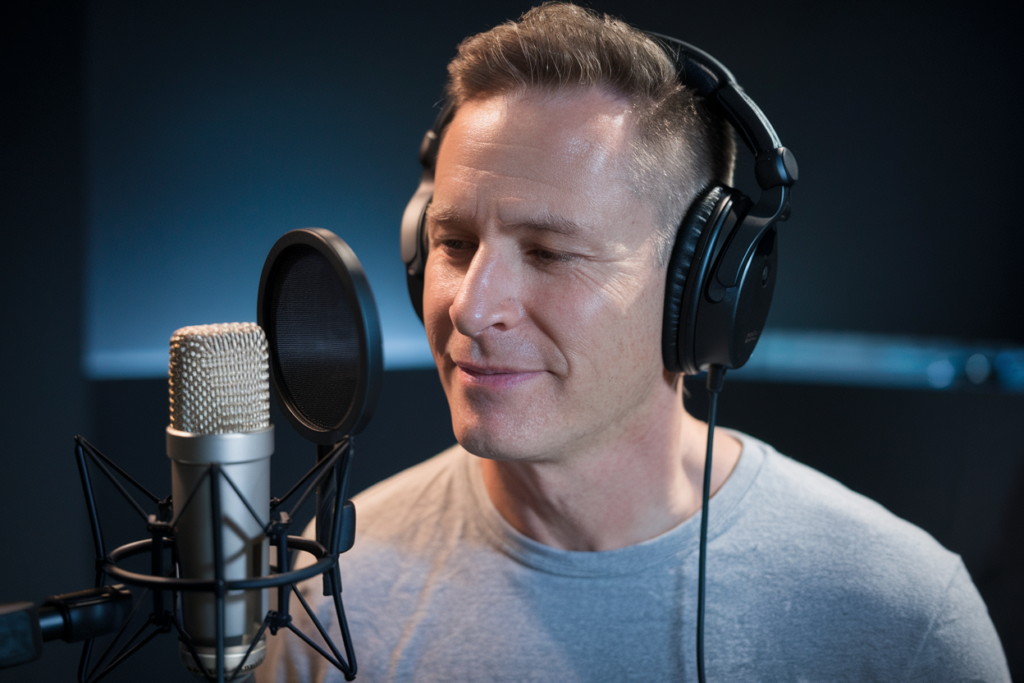Key Takeaways
- Understanding Polish Language Structure: Standard Polish features a rich grammatical system with seven cases, crucial for clear communication and essential for voice talent in formal contexts.
- Significance of Regional Dialects: Various regional dialects such as Silesian and Kashubian showcase distinct phonetic traits and vocabulary, reflecting local cultures and histories that enrich the language’s diversity.
- Cultural Influence on Language: Local customs and historical backgrounds significantly shape how Polish is spoken across different regions, adding unique expressions that can enhance authenticity in voiceover performances.
- Social Perceptions Matter: Standard Polish is often viewed as prestigious, while regional dialects evoke strong cultural ties. Voice actors can leverage these perceptions to connect more deeply with their audiences.
- Importance of Preservation: Embracing both standard language and regional variations not only honors cultural heritage but also enhances communication effectiveness, making storytelling more relatable and engaging.
- Tailoring Delivery for Authenticity: Mastering linguistic nuances enables voice artists to adapt their delivery based on regional characteristics, improving audience connection through genuine portrayals.
Ever wondered why some Polish speakers sound so different from one another? The contrast between the Polish language standard and its regional dialects creates a rich tapestry of communication that can be both fascinating and confusing. While the standard language serves as a unifying force, regional variations reflect local cultures, histories, and identities.
Overview of Polish Language
Polish, a West Slavic language, serves as the official language of Poland and is spoken by approximately 45 million people. It belongs to the Lechitic group of languages and uses the Latin alphabet, featuring 32 letters. The structure of Polish exhibits a rich grammatical system with seven cases, making it distinct from many other European languages.
Standard Polish functions as the primary mode of communication in formal settings like education, media, and government. This standardized version promotes unity among speakers across various regions. However, regional dialects also play a significant role in cultural identity within Poland. For instance, Silesian and Kashubian dialects showcase unique vocabulary and pronunciation influenced by local history.
The phonetic characteristics of Polish include nasal vowels and consonant clusters that can be challenging for non-native speakers. It’s crucial to note how these features might affect voiceover work or any content requiring clear articulation.
While standard Polish remains widely understood, regional variations offer a glimpse into the diverse cultures throughout Poland. Understanding these differences enriches your appreciation for authentic content creation in fields like voiceovers or any artistic endeavors that rely on linguistic nuances.
Polish Language Standard
Standard Polish serves as the primary form of communication in formal contexts, promoting unity among speakers. This standardized version is essential for voice talent and artists working on projects that require clarity and precision.
Historical Context
The historical roots of the Polish language date back to the early Middle Ages. The development of a standard form emerged significantly during the 16th century with the influence of literature and education. Various dialects coexisted while efforts to unify speech became evident through written works. The establishment of a standardized language was crucial for fostering cultural identity, especially during periods of foreign domination.
Key Features
Standard Polish features a rich grammatical structure, including seven cases that affect nouns, pronouns, and adjectives. Phonetics play a vital role as well, characterized by nasal vowels and complex consonant clusters. These elements contribute to clear articulation—essential for voice actors striving to deliver authentic performances. Additionally, Standard Polish maintains consistent pronunciation rules that aid voiceover artists in achieving uniformity across different media formats.
Understanding these aspects not only enhances your appreciation for the language but also equips you with insights into how regional variations can impact performance quality in voiceovers. By grasping both standard and regional nuances, you position yourself favorably within diverse creative fields related to audio production or narration.
Regional Variations of Polish
Polish boasts a rich tapestry of regional variations, each offering unique dialects and accents that reflect local identities. Understanding these differences proves essential, especially for voice talent aiming to connect authentically with diverse audiences.
Dialects and Accents
Poland features several distinct dialects, such as Silesian, Kashubian, and Masurian. Each dialect carries its own phonetic nuances and vocabulary. For instance, Silesian speakers may drop certain consonants or use specific intonations unfamiliar to those accustomed to Standard Polish. These variations not only enrich the language but also create challenges for voice artists seeking authenticity in their performance. Are you prepared to adapt your delivery based on regional characteristics? Mastering these subtleties can significantly enhance your connection with listeners.
Influence of Local Cultures
Local cultures shape the way Polish is spoken across regions. Historical influences and traditions contribute to linguistic diversity; for example, Kashubian reflects maritime heritage while Silesian showcases industrial roots. This cultural backdrop infuses everyday speech with unique phrases and expressions that resonate deeply within communities. As a voice actor, tapping into this cultural richness can elevate your work by making it more relatable and engaging for specific audiences. Incorporating localized elements helps ensure your narration aligns seamlessly with the expectations of those familiar with particular regional sounds and styles.
Understanding these regional variations equips you to better navigate the nuances of Polish language delivery in various contexts—whether it’s an animated character or an informative documentary narration—and ultimately enhances the quality of your performances.
Comparison of Standard and Regional Polish
Understanding the differences between Standard Polish and regional dialects enhances your grasp of the language. It also helps in connecting with diverse audiences through voiceover work.
Linguistic Differences
Standard Polish features a formal structure, often used in media, education, and government. It employs specific grammar rules and vocabulary that promote clarity for voice actors. For example, Standard Polish adheres to strict grammatical cases—seven in total—which help convey precise meaning.
Regional dialects like Silesian or Kashubian introduce unique phonetic traits and vocabulary variations. These dialects contain distinct sounds that may not appear in Standard Polish. Voice artists can benefit from recognizing these variations; mastering them allows for authentic portrayals that resonate more deeply with local audiences.
Social Perceptions
Social perceptions play a significant role in how people view Standard versus regional Polish. Many speakers consider Standard Polish as the language of prestige, often associated with education and professionalism. This perception makes it essential for voice talent aiming to establish credibility within formal contexts.
Conversely, regional dialects evoke strong cultural ties and a sense of identity among locals. Using regional speech can create an emotional connection during voiceovers, making performances feel genuine and relatable to specific communities. Understanding these social nuances empowers you as a voice artist to tailor your delivery effectively based on audience expectations.
By incorporating both linguistic features and social perceptions into your practice, you elevate your skills as a voice actor while fostering deeper connections with listeners across Poland’s diverse landscape.
Importance of Preservation
Preserving the distinctiveness of Polish regional dialects plays a vital role in maintaining cultural heritage. Each dialect carries unique expressions, idioms, and phonetic nuances that reflect the local history and identity. When voice artists embrace these variations, they not only enrich their performances but also honor the rich tapestry of Polish culture.
Understanding both Standard Polish and regional dialects enhances communication effectiveness. For voice talent working across different regions, mastering these linguistic subtleties offers an advantage in connecting with diverse audiences. Whether you’re narrating a documentary or voicing a character in an animated series, knowing when to employ standard language versus regional traits can make all the difference in relatability.
Voice actors benefit by recognizing how social perceptions shape audience expectations. While Standard Polish may convey professionalism and clarity, regional dialects evoke emotional resonance and familiarity. Tapping into this dynamic allows for more authentic portrayals that resonate deeply with listeners.
Incorporating regional speech patterns into your work fosters inclusivity and appreciation for local cultures. By doing so, you elevate your narration from mere words to heartfelt storytelling. This connection transforms voiceover projects into experiences that celebrate diversity within Poland’s linguistic landscape.
Ultimately, preserving these linguistic variations isn’t just about language; it’s about honoring identities and stories intertwined with each sound. As you navigate your craft as a voice over artist, remember that every accent tells a tale worth sharing.
Conclusion
Understanding the balance between Standard Polish and its regional dialects enriches your appreciation of the language. Each dialect tells a unique story about local culture and history, while Standard Polish serves as a common thread that unites speakers across Poland.
For voice talent, mastering both forms is essential for creating authentic connections with audiences. Embracing these linguistic subtleties not only enhances communication but also honors the diverse identities within Poland’s rich cultural landscape. As you navigate this intricate linguistic tapestry, you’ll find opportunities to elevate your performances and engage listeners on a deeper level.
Frequently Asked Questions
What is the difference between Standard Polish and regional dialects?
Standard Polish serves as a formal, unifying language used in education and media, while regional dialects represent local cultures with unique phonetic traits and vocabulary. Understanding these differences can enhance communication and authenticity for voice talent.
How many people speak Polish?
Approximately 45 million people speak Polish worldwide. It is classified as a West Slavic language, rich in grammatical structure with seven cases, making it distinct among other languages.
When did the standardization of the Polish language occur?
The standardization of the Polish language emerged during the 16th century, influenced by literature and education. This process was vital for fostering cultural identity amidst periods of foreign domination.
Why are regional dialects important for voice artists?
Regional dialects enrich performances by allowing voice artists to connect authentically with diverse audiences. Each dialect carries unique expressions that reflect local history and culture, enhancing relatability.
What are some examples of Polish regional dialects?
Examples include Silesian, Kashubian, and Masurian. Each has its own phonetic nuances and vocabulary that showcase Poland’s linguistic diversity and cultural heritage.
How do social perceptions affect Standard Polish and regional dialects?
Standard Polish is often viewed as prestigious and professional, while regional dialects evoke strong cultural ties. Voice talent can leverage this understanding to create deeper emotional connections during performances.
Why should we preserve regional dialects in Poland?
Preserving regional dialects maintains cultural heritage by honoring unique expressions tied to local identities. It enriches artistic performances while celebrating Poland’s linguistic diversity through authentic storytelling.







